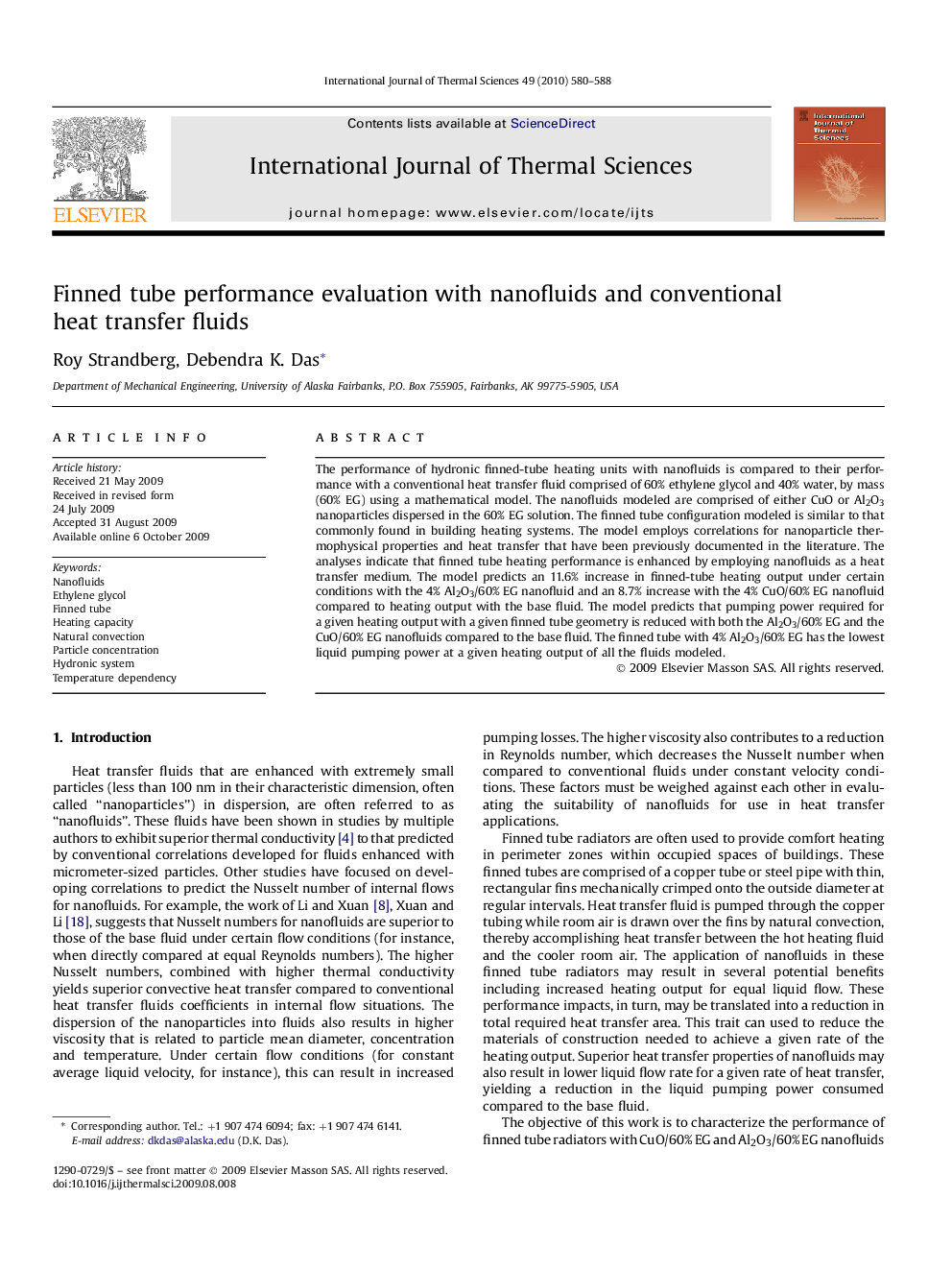| Article ID | Journal | Published Year | Pages | File Type |
|---|---|---|---|---|
| 670263 | International Journal of Thermal Sciences | 2010 | 9 Pages |
The performance of hydronic finned-tube heating units with nanofluids is compared to their performance with a conventional heat transfer fluid comprised of 60% ethylene glycol and 40% water, by mass (60% EG) using a mathematical model. The nanofluids modeled are comprised of either CuO or Al2O3 nanoparticles dispersed in the 60% EG solution. The finned tube configuration modeled is similar to that commonly found in building heating systems. The model employs correlations for nanoparticle thermophysical properties and heat transfer that have been previously documented in the literature. The analyses indicate that finned tube heating performance is enhanced by employing nanofluids as a heat transfer medium. The model predicts an 11.6% increase in finned-tube heating output under certain conditions with the 4% Al2O3/60% EG nanofluid and an 8.7% increase with the 4% CuO/60% EG nanofluid compared to heating output with the base fluid. The model predicts that pumping power required for a given heating output with a given finned tube geometry is reduced with both the Al2O3/60% EG and the CuO/60% EG nanofluids compared to the base fluid. The finned tube with 4% Al2O3/60% EG has the lowest liquid pumping power at a given heating output of all the fluids modeled.
